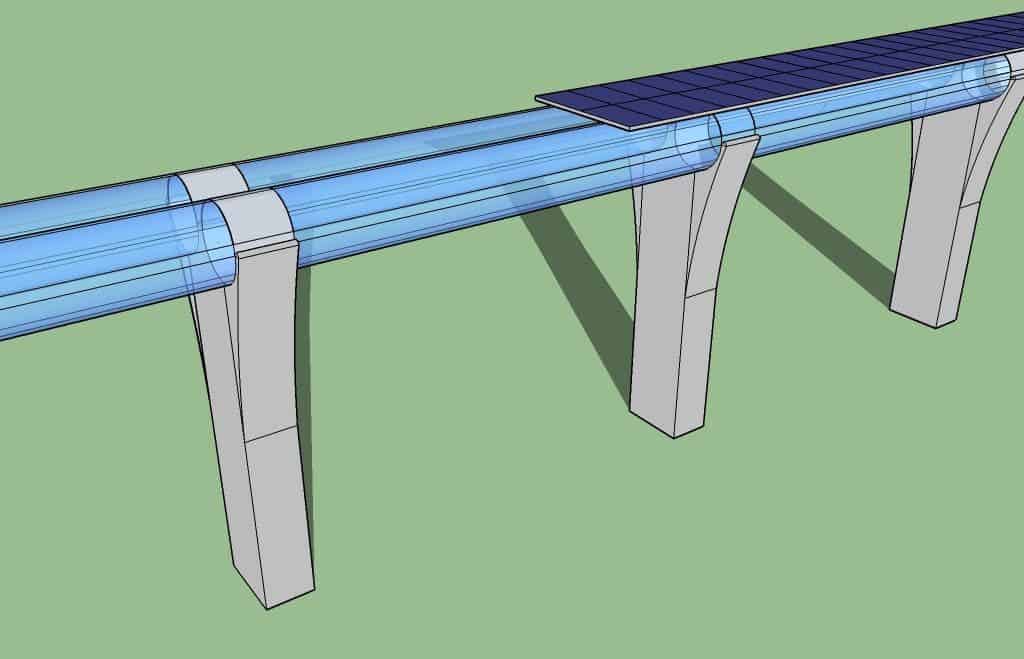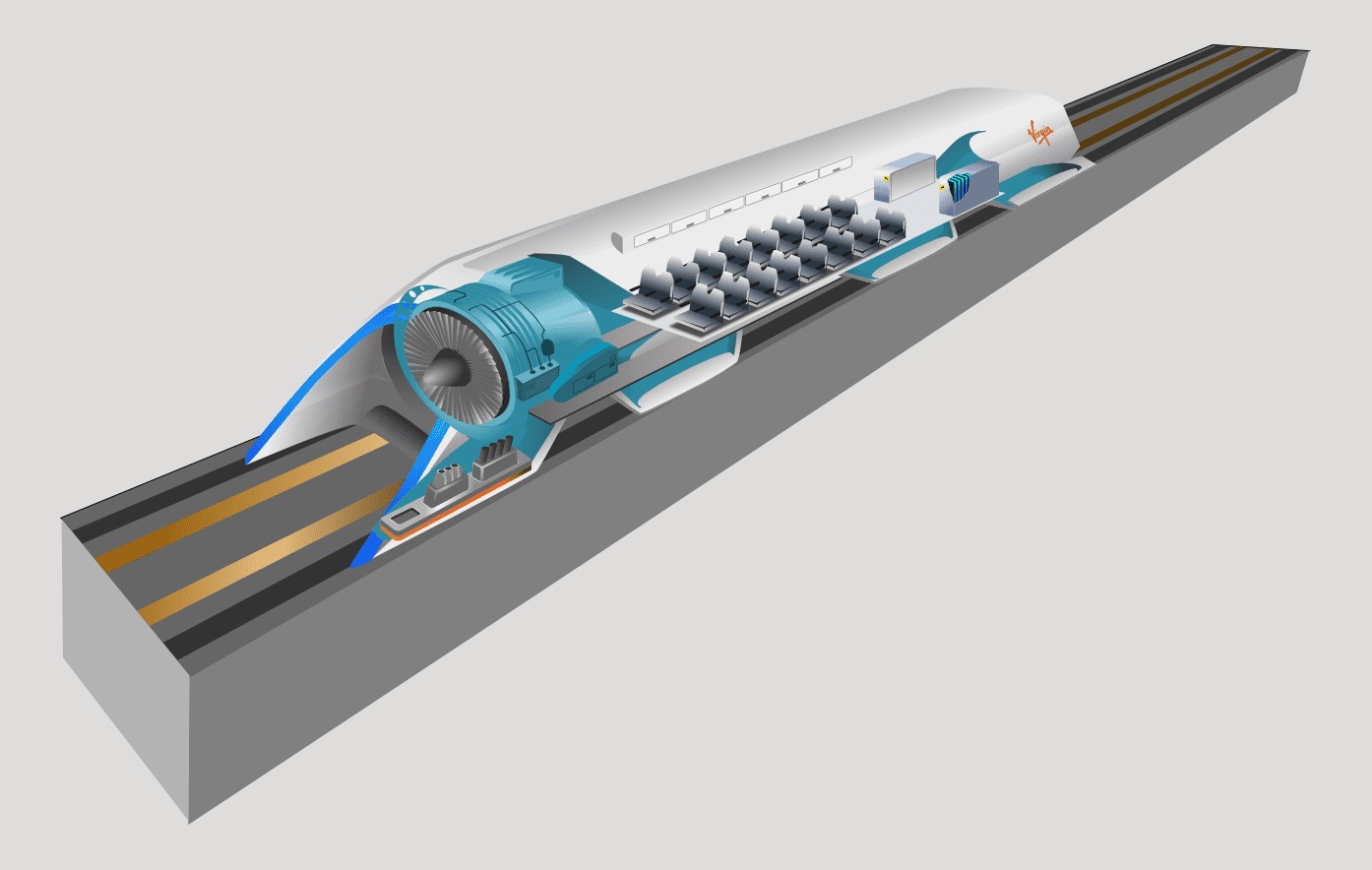The Hyperloop could become the next big thing in transportation. It’s a train-like tube-based transportation system which can move at extremely high speeds of up to 760 miles per hour – 1220 km/h.
Currently, it would take some six hours to travel from Košice, Slovakia, to Vienna. Even a direct flight would still take you a bit over one hour. With the Hyperloop, it could take only 43 minutes. This seemingly miraculous feat is facilitated by the tube-based transport system. Inside it, pressurized passenger pods are accelerated through reduced-pressure tubes which virtually eliminate friction with air, allowing the pods to travel at very high speeds.
The Hyperloop was first proposed by entrepreneur Elon Musk, who designed a conceptual route from the Los Angeles region to the San Francisco Bay Area, paralleling the Interstate 5 corridor for most of its length. Preliminary calculations showed an expected journey time of 35 minutes, meaning that passengers would traverse the 350-mile (560 km) route at an average speed of around 600 mph (970 km/h), with a top speed of 760 mph (1,200 km/h). Unfortunately, massive bureaucratic hurdles have been laid out before Musk so one of his competitors — Hyperloop Transportation Technologies, or HTT — set out to build their system in a different location: central Europe.
HTT CEO Dirk Ahlborn announced that his company has reached an agreement with the Slovakian government. The plan is to set up the Hyperloop from Vienna, Austria, to Bratislava, Slovakia, and from Bratislava to Budapest, Hungary. These are three of the biggest cities in the area, and traffic between the three of them can be quite a drag. The company announced:
“Slovakia is a technological leader in the automotive, material science and energy industries, many of the areas that are integral to the Hyperloop system,” Ahlborn said in a press release. “With our project in Quay Valley, this agreement with Slovakia, and future developments with other regions of the world, HTT truly has become a global movement.”
Well, I’m not completely sure about Slovakia’s status as a leader in those fields, but we’re definitely talking about a developed, capable country which can definitely handle a project of this magnitude. Also, unlike American officials, the ones in Slovakia were delighted by the prospect.
“Hyperloop in Europe would cut distances substantially and network cities in unprecedented ways. A transportation system of this kind would redefine the concept of commuting and boost cross-border cooperation in Europe,” said Vazil Hudak, Slovakia’s economic minister, said in a statement. “The expansion of Hyperloop will lead to an increased demand for the creation of new innovation hubs, in Slovakia and all over Europe.”
The total costs for this project are somewhere between $200 million and $300 million, but if you consider that the project can transport 10 million people every year and the entire system is almost self-sustainable with solar panels, it’s really not that high of a cost.
But we shouldn’t get excited just yet. There are still some technical and design questions which have yet to be answered, and I haven’t been able to find any comment from the two other governments involved in the project. There are reasons to be optimistic, too. The company lobby opposing the Hyperloop in the US is not as strong in Europe, and the distances between cities are generally smaller on the old continent. I guess we’ll just have to wait and see.











